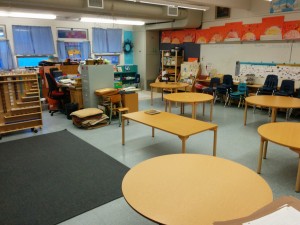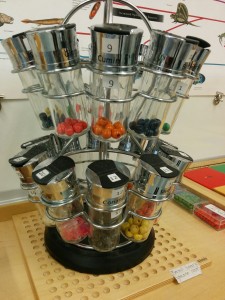It is good to be back in the classroom after not being here last week. The classroom layout has changed significantly changed since the last time I was visiting the class.
Instead of the round tables being at the front of the room, the rectangle table was placed in front instead. Throughout the months I have been in this classroom, there has been numerous changes in the format. This is because there is an emphasis on the importance of the prepared environment in the Montessori philosophy.
The classroom is the place in which children do a majority of their learning. Thus it is of utmost importance that it is organized and arranged in a way that facilitates learning. Something I have learned is that Montessori classrooms do not put name labels on desks. Rather, the children sit in a spot that they feel comfortable in. This gives them a sense of agency and independence.

During math, the children began to work with the bead chain materials. They would pick up a bead chain and count the number of beads in each sequence and record it in their books. This allowed them to learn the multiplication table. For example, when the child is answering “6 x 4”, they would count 4 sets of the 6 beads and realized that the answer is 24.
I noticed that all the children were working at different paces so there was never a need to wait for materials. The children would count each bead carefully making sure to not lose count and over time, they would realize that there is a pattern to the multiplication table. Realizing that 6 + 6 + 6 + 6 = 24, therefore 6 x 4 = 24. It was wonderful to see them come to such epiphanies.

Another math material that was used by the children today were the subtraction beads. My SA created the set out of an old spice rack so the children enjoyed smelling each jar and identifying the spices as well.

The children had their spelling tests today as well. In contrast to more “traditional” classrooms, each child has their own spelling lists that are catered to their comprehension level. As they master each list, they move up to the next one. Although each child has a different list of words, the teacher does not carry out individual spelling tests. Rather, the children partner up with someone who is at the same colour level as them and test each other.
However, at the beginning of the year, the teacher needs to test each child individually in order to put them at the appropriate level. It was fascinating to watch each child test each other. They appeared to have a sense of responsibility from doing so because they marked each others’ tests and had to find the next sequential card to record their new sets of words.

